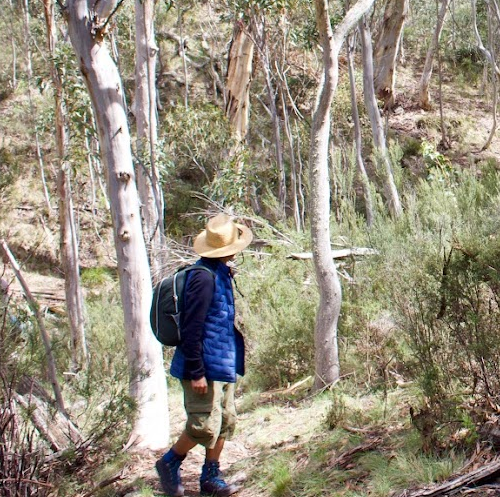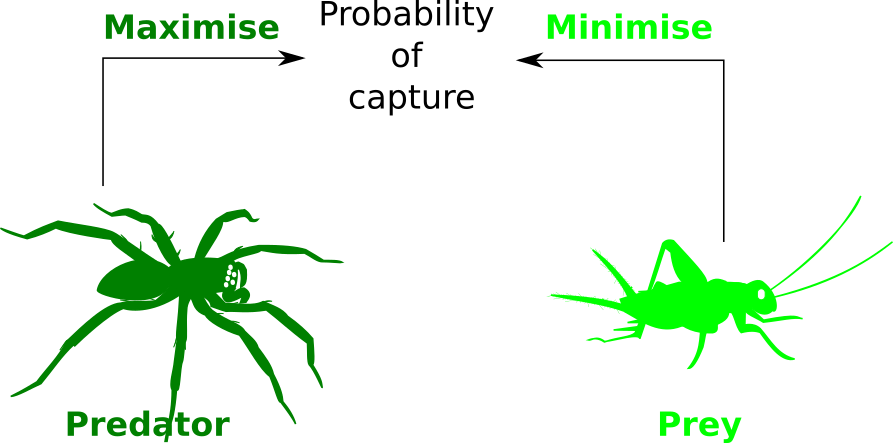Annuaire

Libellé inconnu
M. Paul Clemencon
PhD studentCoordonnées
1050
Discipline(s)
Biologie des populations et écologie
Discipline(s) enseignée(s)
Éthologie (L1)
Écologie (L1)
Diversité du vivant (L1)
Biologie des Organismes (L2)
Écophysiologie (L3)
Biomimétisme (M2)
Écologie (L1)
Diversité du vivant (L1)
Biologie des Organismes (L2)
Écophysiologie (L3)
Biomimétisme (M2)
Thèmes de recherche
Since childhood, I have always been interested by the fascinating world of insects and the way they integrate and filter information to produce one behavioral output in such a complex world. During my studies, I had the opportunity to study the sensory ecology of a Aussie migratory moth (Agrotis infusa) and the impact of an olfactory noise on the pheromone system of another noctuid moth (Agrotis ipsilon).
I started a PhD within the INOV group in September 2021 under the direction of Prof. Jérôme Casas and Prof. Claudio Lazzari. I will study the predator-prey interactions between the wolf spider Pardosa sp. and the wood cricket Nemobius sylvestris. Wolf spiders hunt for wood crickets in the leaf litter either by ambushing or by cruising. In turn, crickets can detect aerodynamic signatures of approaching spiders thanks to filiform hairs located on their cerci, information which is then encoded by a population of giant interneurons ans eventually ascends to higher motor centers triggering an escape response. For my project, I will analysing these interactions in light of the "hide-and-seek-and-pursuit-and-evasion game theory", and then I will attempt to understand better the neurophysiological basis of escape in these insects. Eventually, I plan to model the cricket wind processing network in a neuromorphic perspective. I am hoping that this project will help us to understand how feature detection and action selection work in the cricket, while also suggesting ways to integrate information incoming from MEMS with low-energy consumption.

I started a PhD within the INOV group in September 2021 under the direction of Prof. Jérôme Casas and Prof. Claudio Lazzari. I will study the predator-prey interactions between the wolf spider Pardosa sp. and the wood cricket Nemobius sylvestris. Wolf spiders hunt for wood crickets in the leaf litter either by ambushing or by cruising. In turn, crickets can detect aerodynamic signatures of approaching spiders thanks to filiform hairs located on their cerci, information which is then encoded by a population of giant interneurons ans eventually ascends to higher motor centers triggering an escape response. For my project, I will analysing these interactions in light of the "hide-and-seek-and-pursuit-and-evasion game theory", and then I will attempt to understand better the neurophysiological basis of escape in these insects. Eventually, I plan to model the cricket wind processing network in a neuromorphic perspective. I am hoping that this project will help us to understand how feature detection and action selection work in the cricket, while also suggesting ways to integrate information incoming from MEMS with low-energy consumption.

Activités / CV
Talk
- Hide-and-seek and pursuit-evasion games during spider-cricket interactions - European Ph.D. Network "Insect Science" Annual Meeting - Florence, Italy (17 - 19 Nov. 2021)
- A spiking model of the cricket escape mechanosensory system - Club de Neurobiologie des Invertébrés - Toulouse, France ( 6 - 7 April 2021)
-A recursive search game with a decremental budget : a step to bridge foraging ecology and search games - LSE-Warwick Workshop on Search Games and Patrolling - London, UK (3 - 4 July 2023)
Posters
- Processing of mechanosensory information in the cricket: from neuroethology to neuromorphism - Sensory Ecology Course - Lund, Sweden
Publications
Orcid: https://orcid.org/0000-0001-6147-1461
Popular science
- S’orienter vers la bonne route : la navigation spatiale chez les insectes. Planète Vie
- Le guide évasion – Partie 1 : écologie des jeux de cache-cache et de poursuite évasion Passion Entomologie
- Le guide évasion – Partie 2 : de la perception de stimuli dangereux aux actions motrices Passion Entomologie
- Hide-and-seek and pursuit-evasion games during spider-cricket interactions - European Ph.D. Network "Insect Science" Annual Meeting - Florence, Italy (17 - 19 Nov. 2021)
- A spiking model of the cricket escape mechanosensory system - Club de Neurobiologie des Invertébrés - Toulouse, France ( 6 - 7 April 2021)
-A recursive search game with a decremental budget : a step to bridge foraging ecology and search games - LSE-Warwick Workshop on Search Games and Patrolling - London, UK (3 - 4 July 2023)
Posters
- Processing of mechanosensory information in the cricket: from neuroethology to neuromorphism - Sensory Ecology Course - Lund, Sweden
Publications
Orcid: https://orcid.org/0000-0001-6147-1461
Popular science
- S’orienter vers la bonne route : la navigation spatiale chez les insectes. Planète Vie
- Le guide évasion – Partie 1 : écologie des jeux de cache-cache et de poursuite évasion Passion Entomologie
- Le guide évasion – Partie 2 : de la perception de stimuli dangereux aux actions motrices Passion Entomologie
